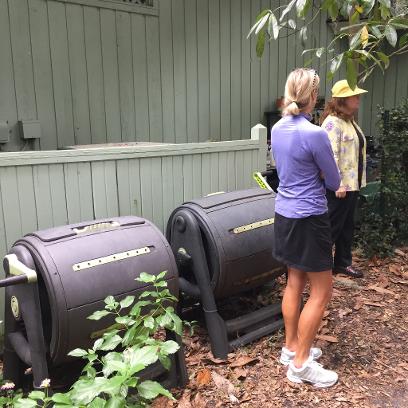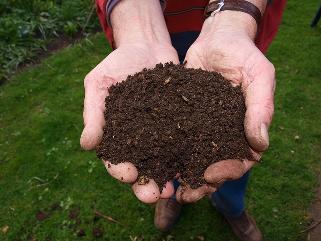Composting 101
Feed your Dirt
Have any of you started just looking at the coffee grounds and food scraps you throw away every day? Or the beautiful molded leaves that are still in your yard under your bushes from the last several years? They are treasures!!! Composting is not a fertilizer; it is a soil conditioning amendment. It is valuable in so many ways:
- Improves the soil structure
- Increases nutrient content
- It improves moisture retention, increases soil aeration, remediates contaminated soil
- Reduces plant diseases and pest problems
- Reduces need for chemical fertilizers
- Improves organic matter
There are lots of ways to compost whether it is in a hidden part of your yard, or if it is in a nice plastic bin that you turn. It takes time and effort, but is well worth it. It is important to remember that you need a much larger amount of brown (carbon) stuff than green (nitrogen rich) stuff. If you don’t have the correct ratio other things can happen – little frogs (that was really nice), gnats (not so hot), and Black Soldier Fly larvae (it took me awhile to be able to open the bin without fear). The Soldier Fly Larvae are actually sold for their valuable calcium content! So it turned out that none of the problems I encountered were a hindrance to my composting project. Only a learning tool!
Green Things: Some of the green things to compost are vegetable and fruit scraps, eggshells, grass clippings, and old plants that have bitten the dust. Everything you put in needs to be free from chemicals. I never put weeds in my bin, and think twice about some of the flowering plants if they are invasive (reseed easily). You might find lots of volunteers all over your yard. I had tomato plants in a lot of different areas of my yard this past summer – but none of them produced a tomato. I have a bowl in my refrigerator that I use to save my veg/fruit scraps. The trick is to go out there about every other day add stuff to your bin and turn it for aeration. It sounds icky to keep those scraps in your fridge, but I figure if I can keep live meal worms in my fridge, then food scraps are nothing.
Brown things: Brown things to add are dry leaves – sweet gum leaves are better than oak. Don’t use pine straw – there is a good reason we use it for mulch. You can add sawdust but not from treated wood! Cardboard works too. If my bin gets too mucky I find a bunch of dry leaves and put them in there. I just recently added blood meal to speed up the decomposition. You can also add alfalfa meal or cottonseed meal. Never put meat or dairy products!! I never use animal manure– even though I have some books that say that is OK. Also, the more you chop things up the faster they will break down.
“If you have a garden and a library, you have everything you need.” Cicero
My research for this project came from ‘The Organic Composting Handbook Techniques for a Healthy Abundant Garden’, by DeDe Cummings.
Pam Patterson Horticulture Committee


© Copyright The Landings Garden Club
